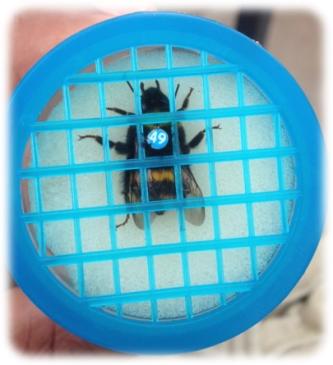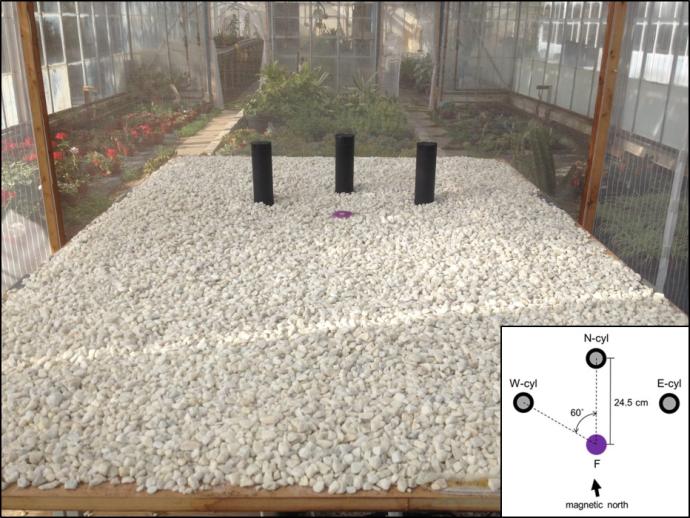
Animals & Setup
The experiment was carried out in a section of a greenhouse to provide a semi-controlled environment, and the subjects were commercially reared Bombus terrestris bumblebees, which I tagged individually with a coloured and numbered disc glued onto the thorax. Only workers were used in the experiment.

At either end of the greenhouse section, stationed 3 m apart, were two gravel-covered tables. The colony was placed underneath one of them and connected to a hole in the surface with a tube; this simulated a subterranean nest. The other table contained the experimental apparatus -- a purple artificial flower filled with sugar-water, as well as a certain number of black, cylindrical landmarks placed close to the flower.

Experimental Procedure
On approach to the flower, bumblebees saw a single cylinder in one of the three positions shown above: west (W-cyl), north (N-cyl) or east (E-cyl). This formed the basis for the three experimental groups, which I refer to simply as WEST bees, NORTH bees and EAST bees, respectively.
While the bumblebee drank its fill, the other two landmarks were added. Thus, all bumblebees saw the same three-landmark array when they departed and performed a learning flight.
A high-definition video-camera was hung roughly a metre above the apparatus, so that each individual's approach and learning flights were continuously recorded. The bumblebee's position and orientation in each frame of video (50 frames per second) were then extracted in MATLAB, and the resulting data were analyzed in R.
Data were collected for a total of 44 bees (15, 14 and 15 for the three experimental groups, respectively).
Responsible for this page:
Director of undergraduate studies Biology
Last updated:
05/21/19

